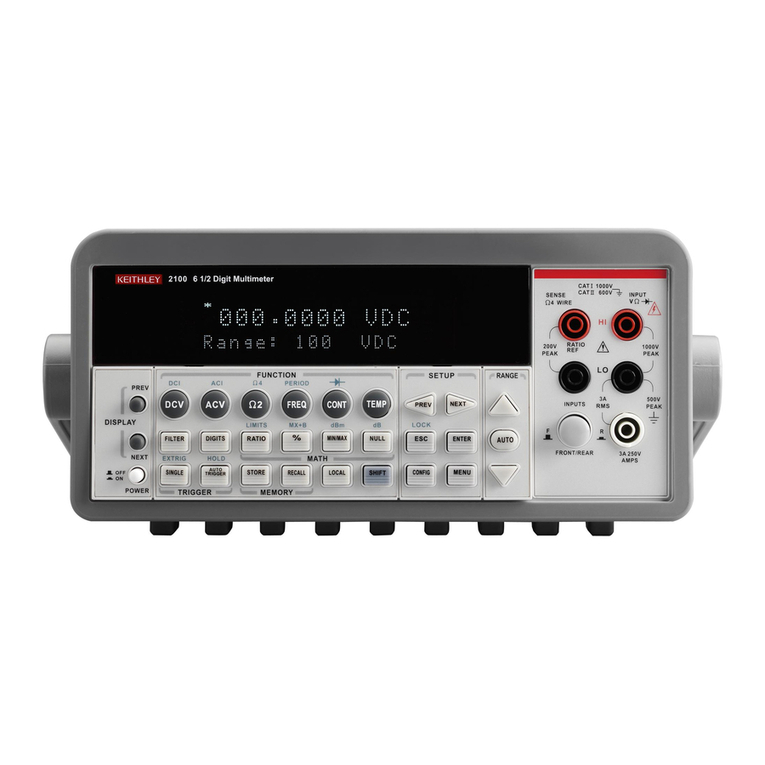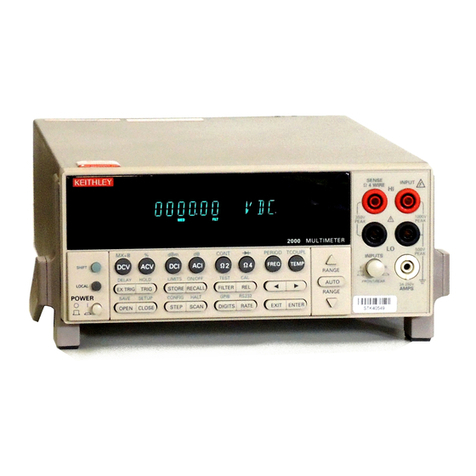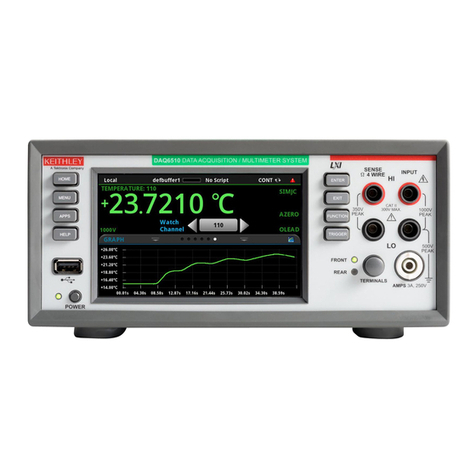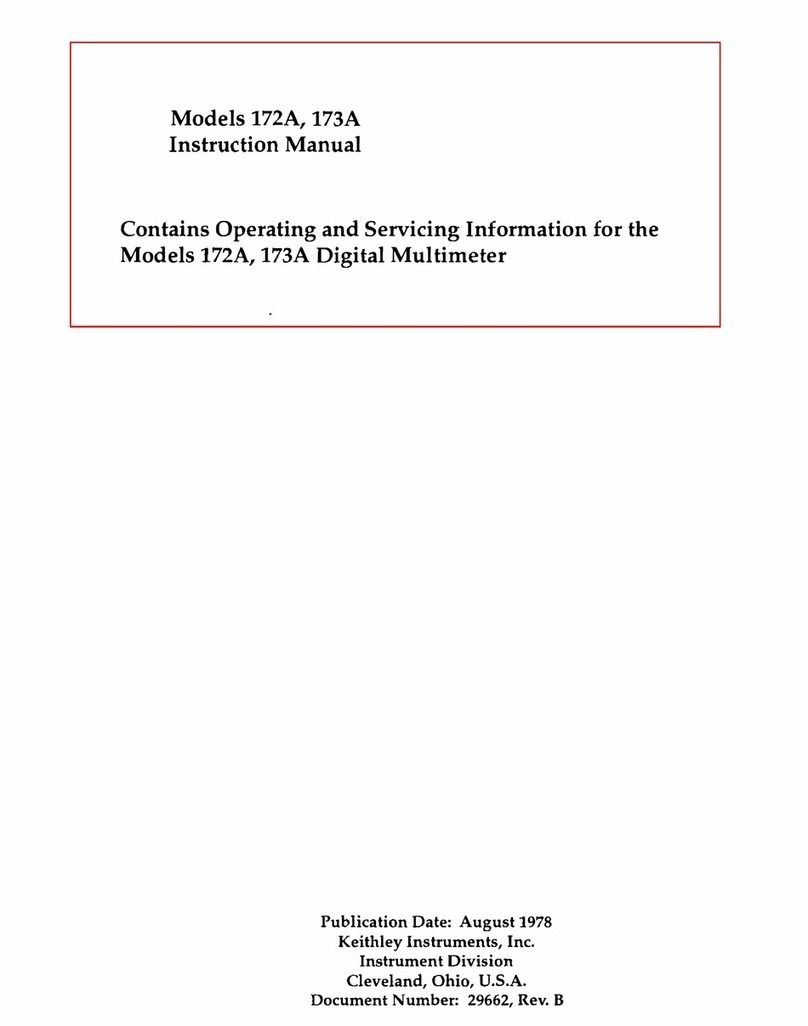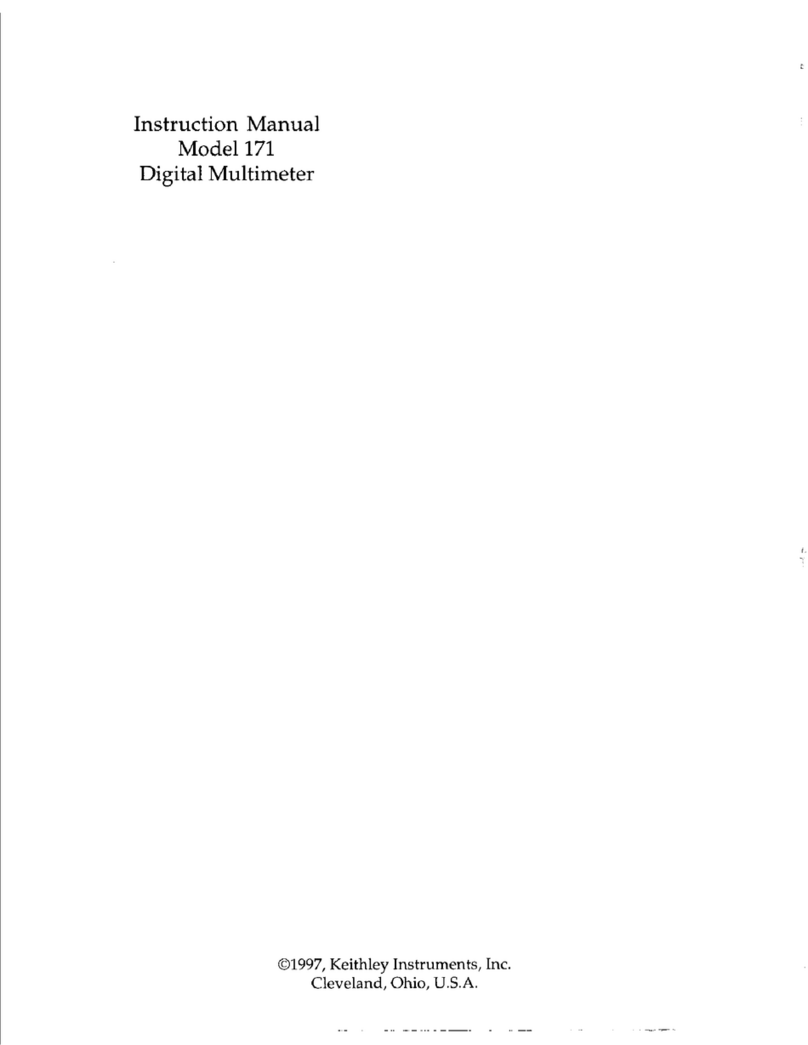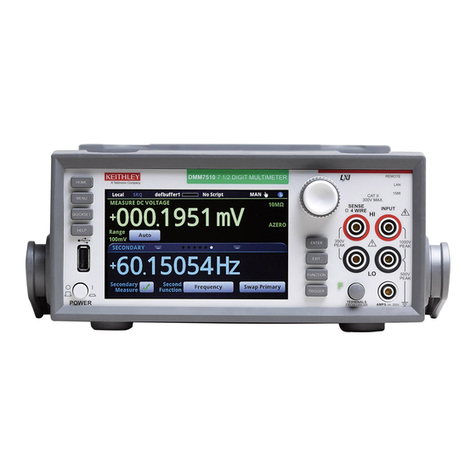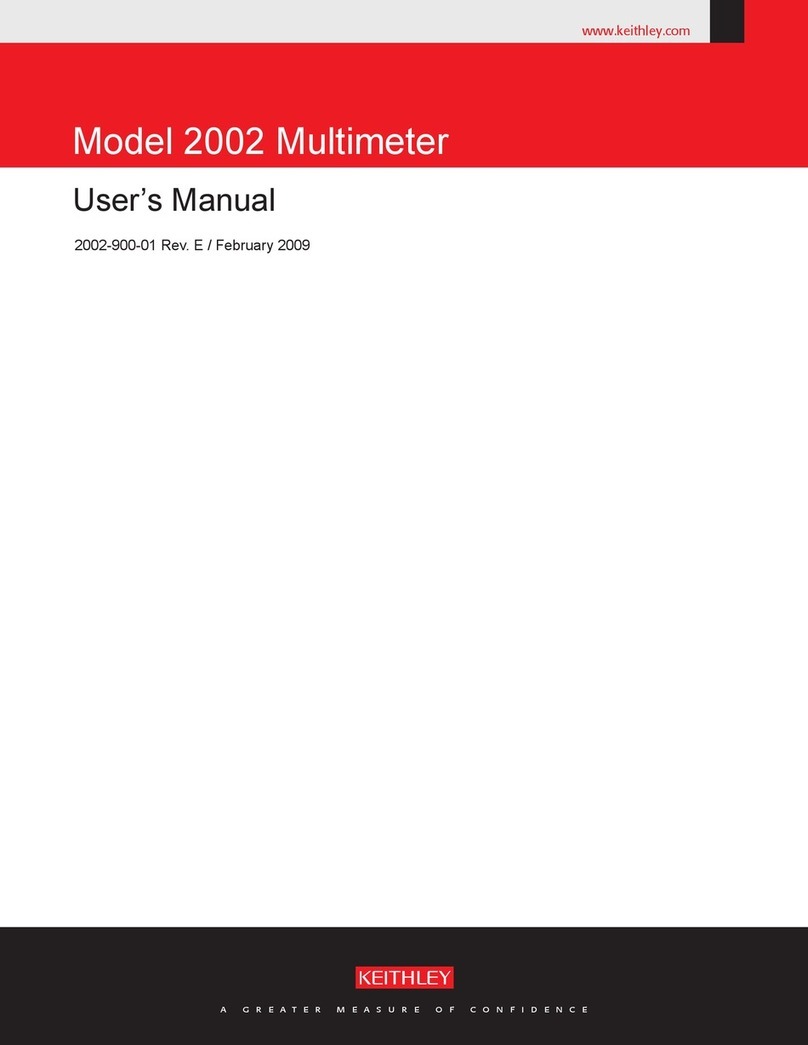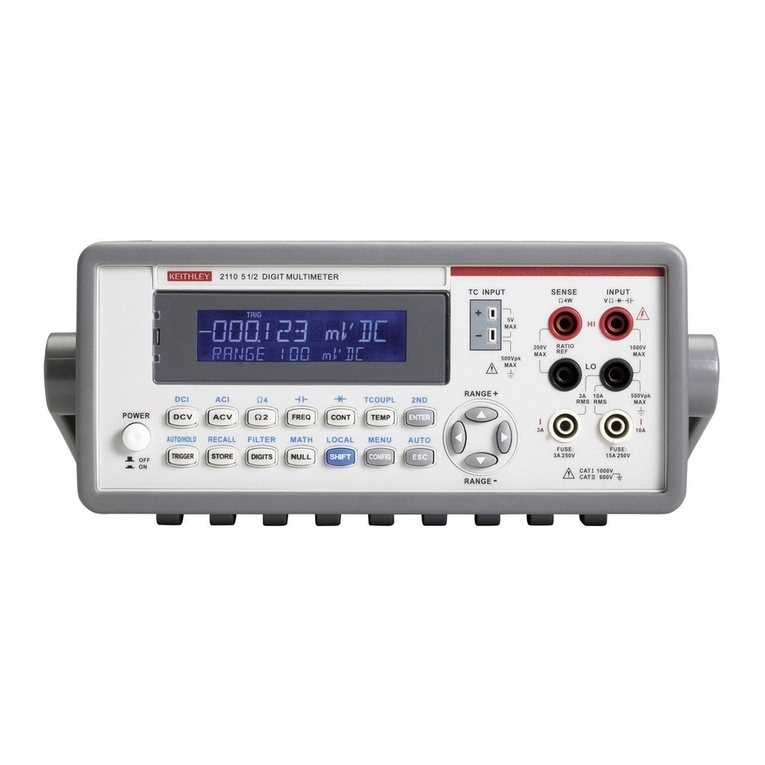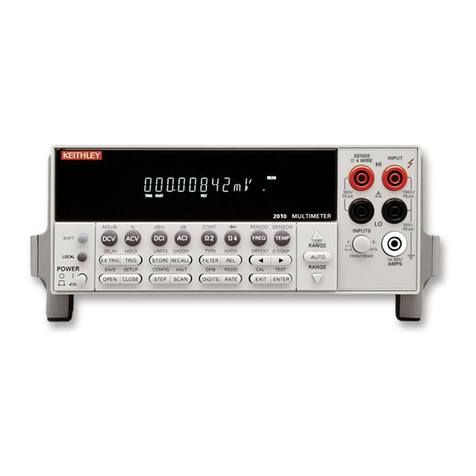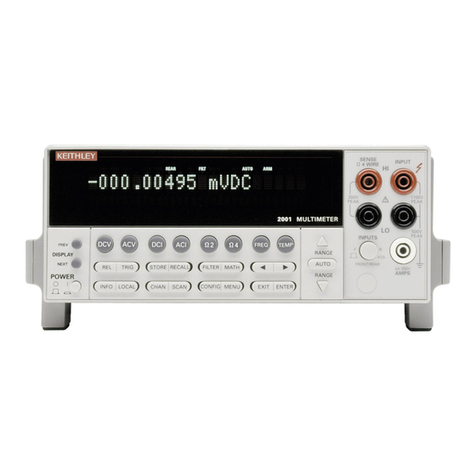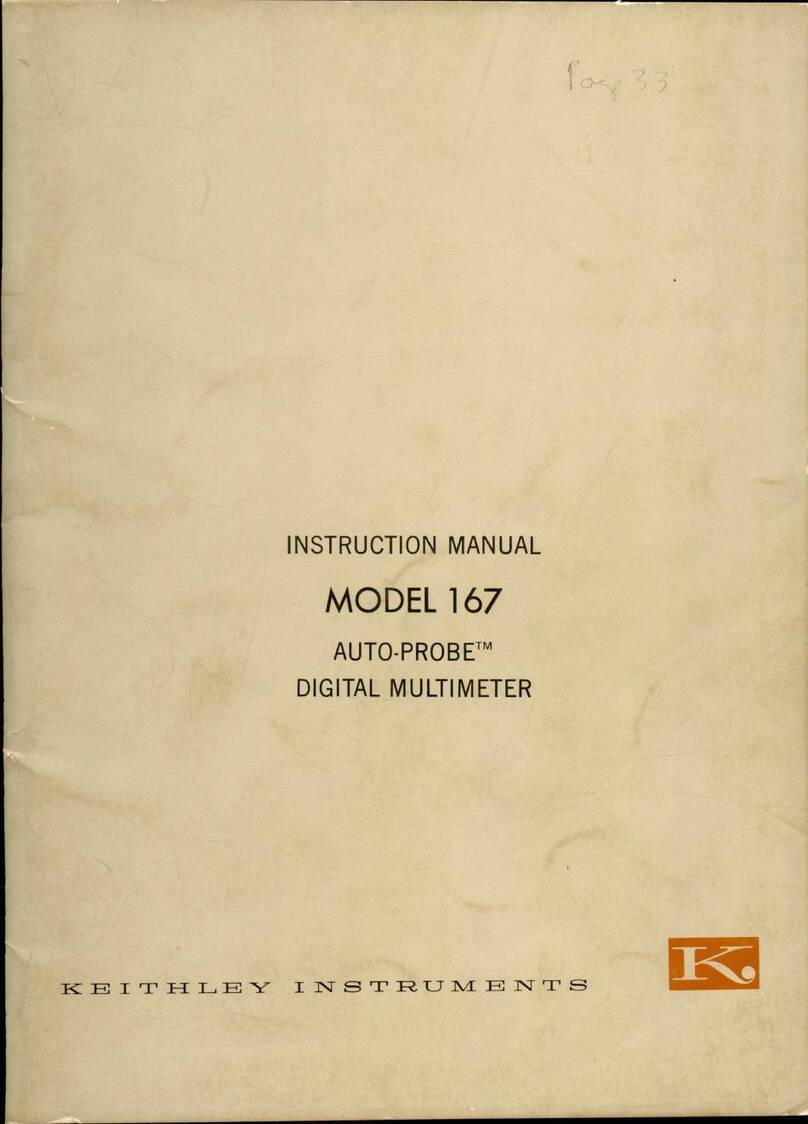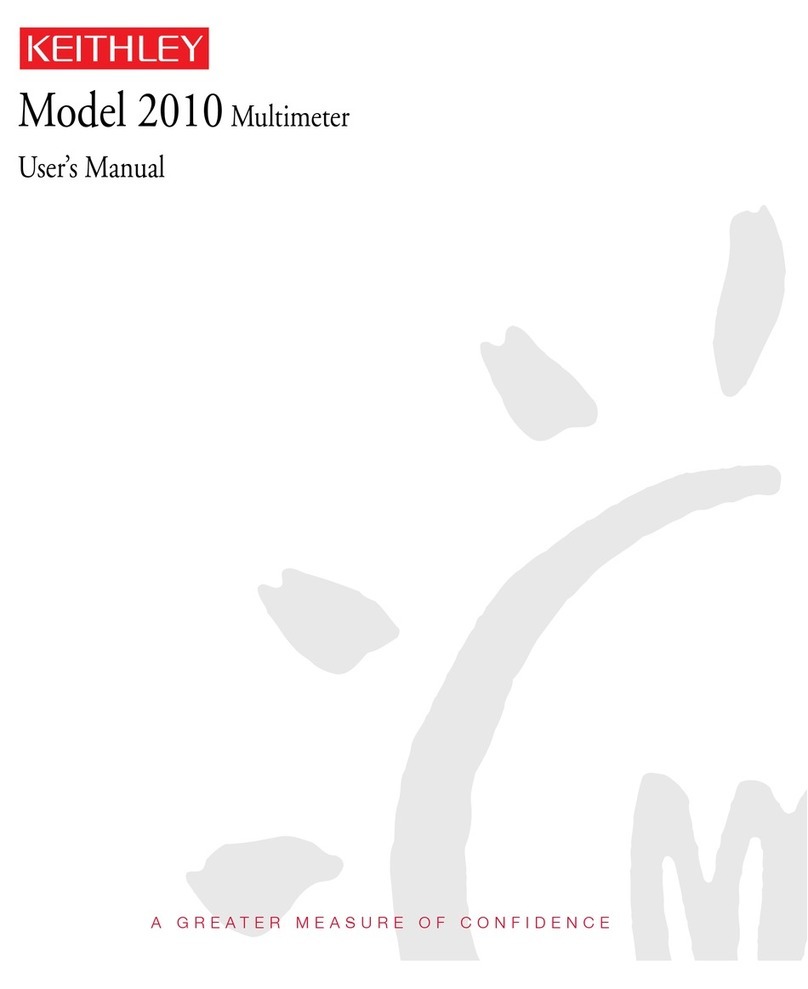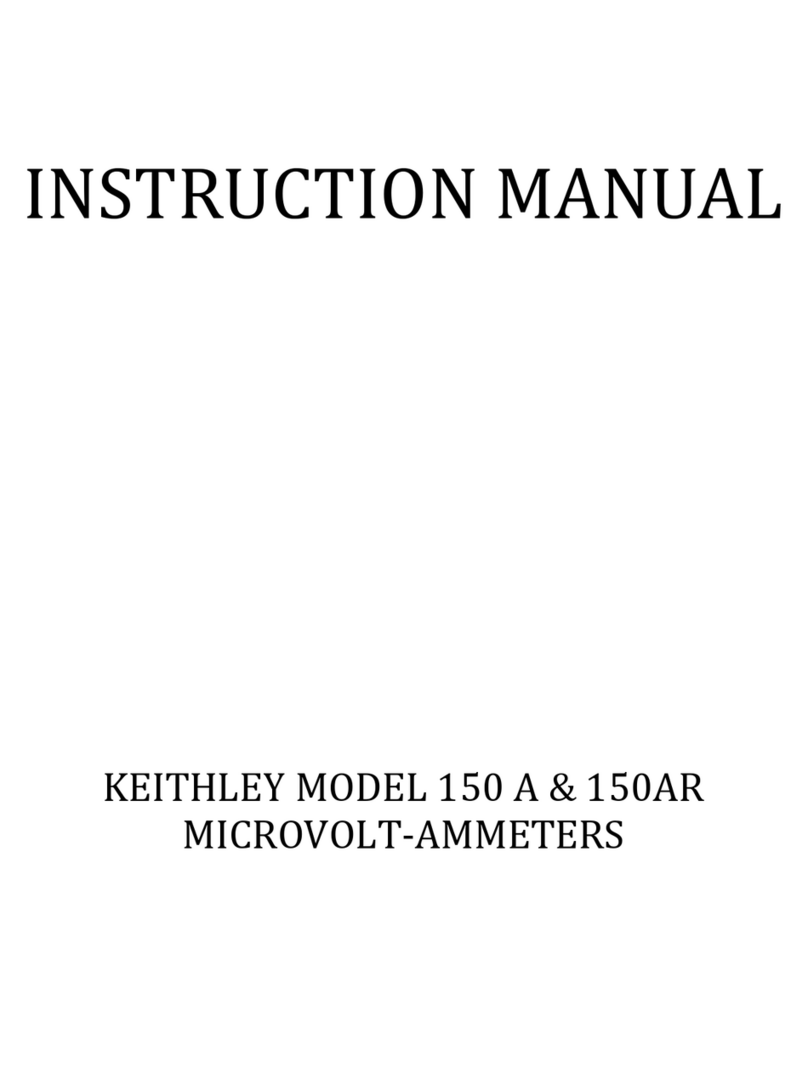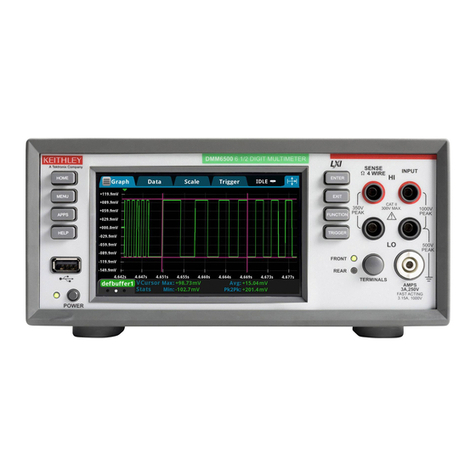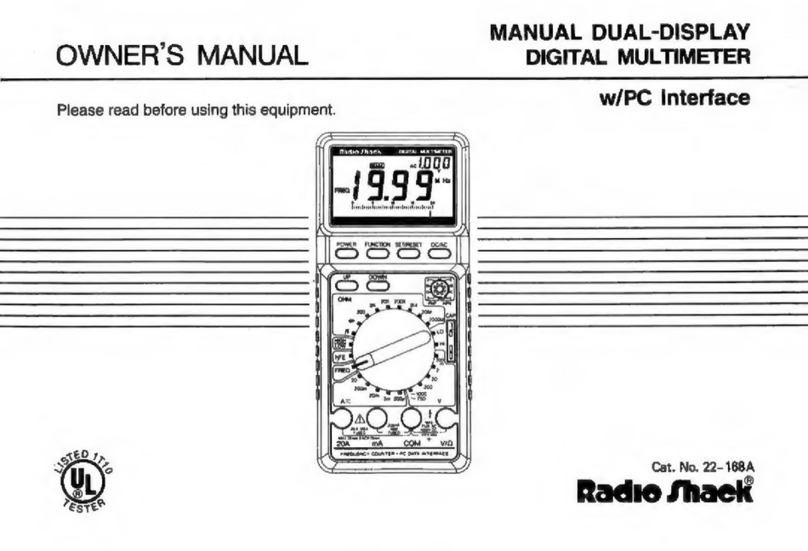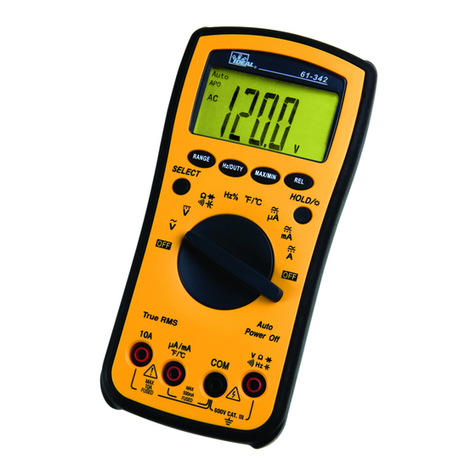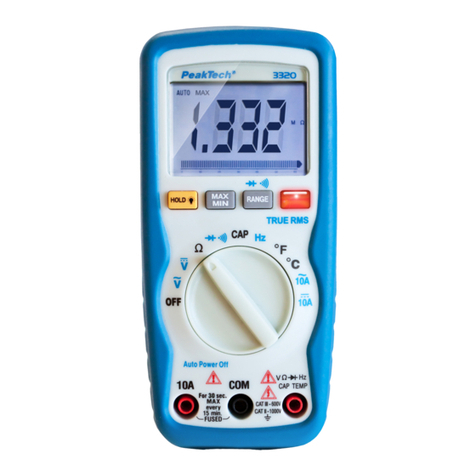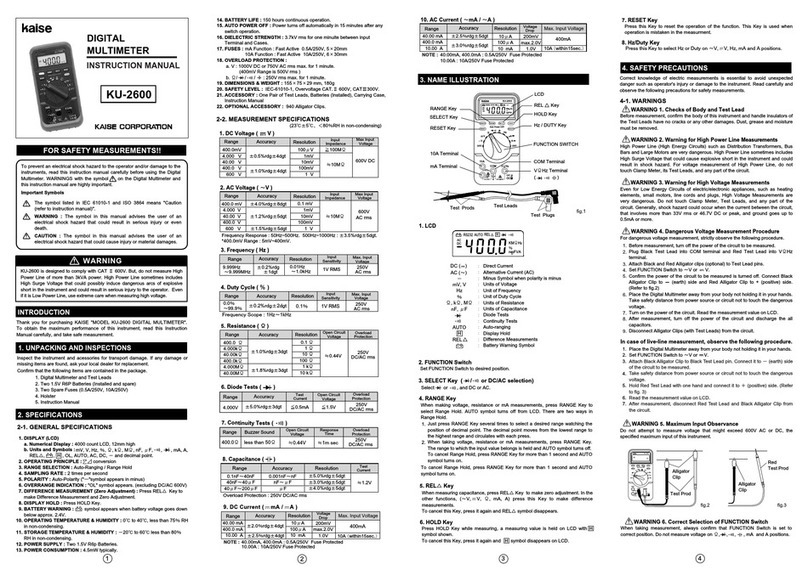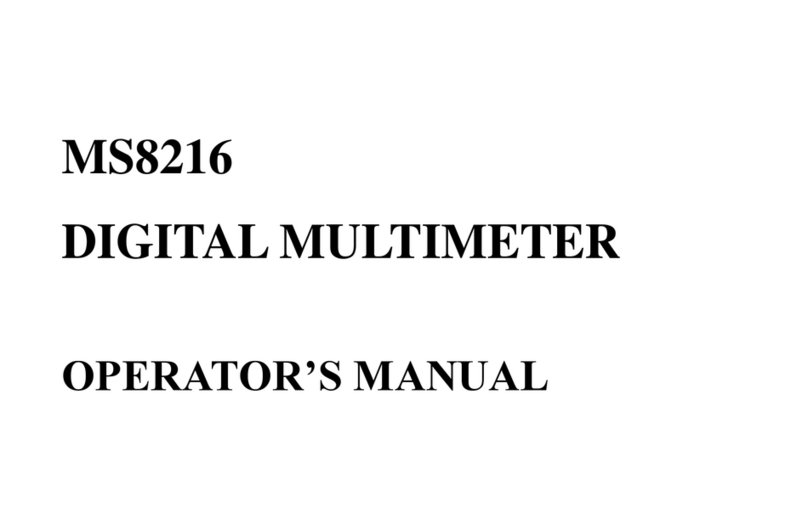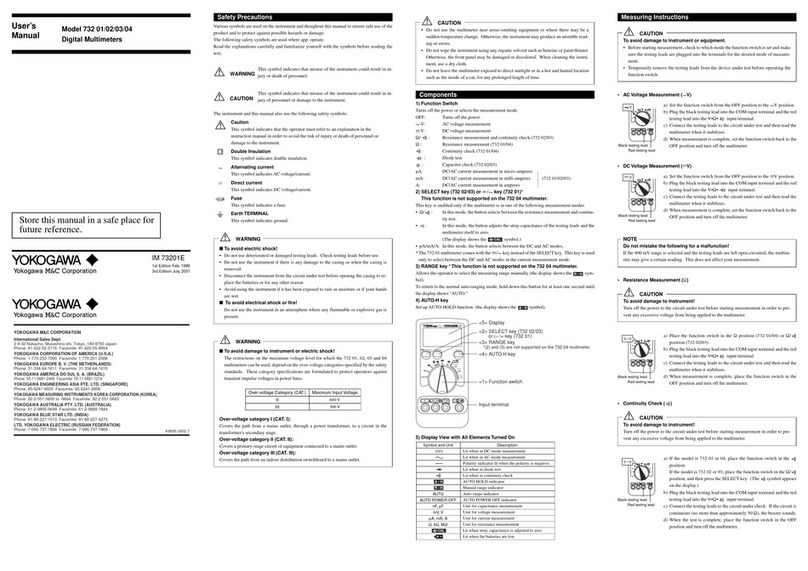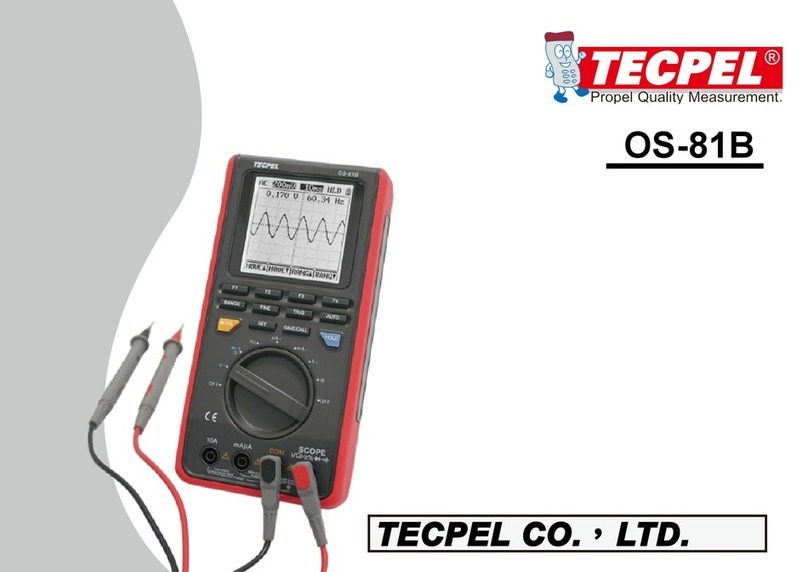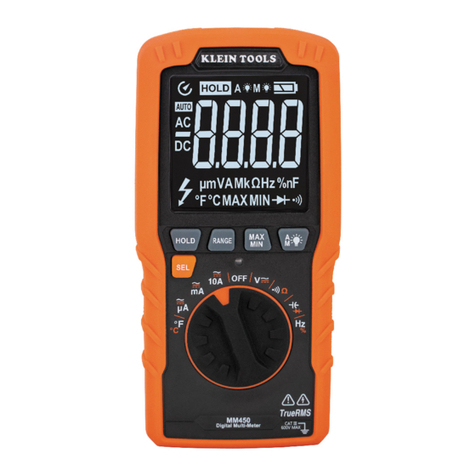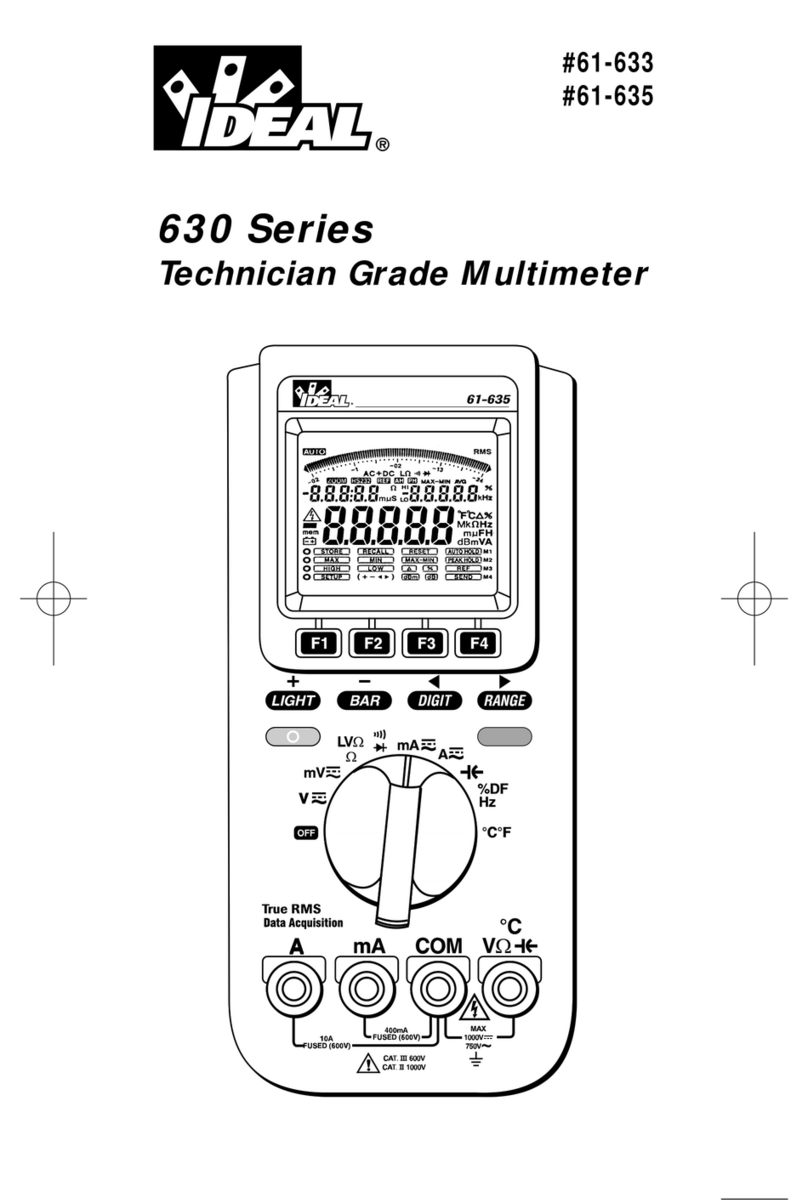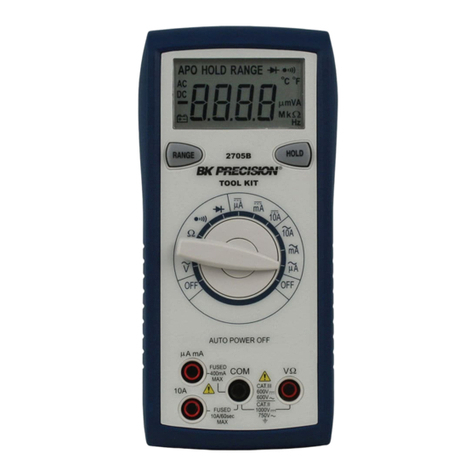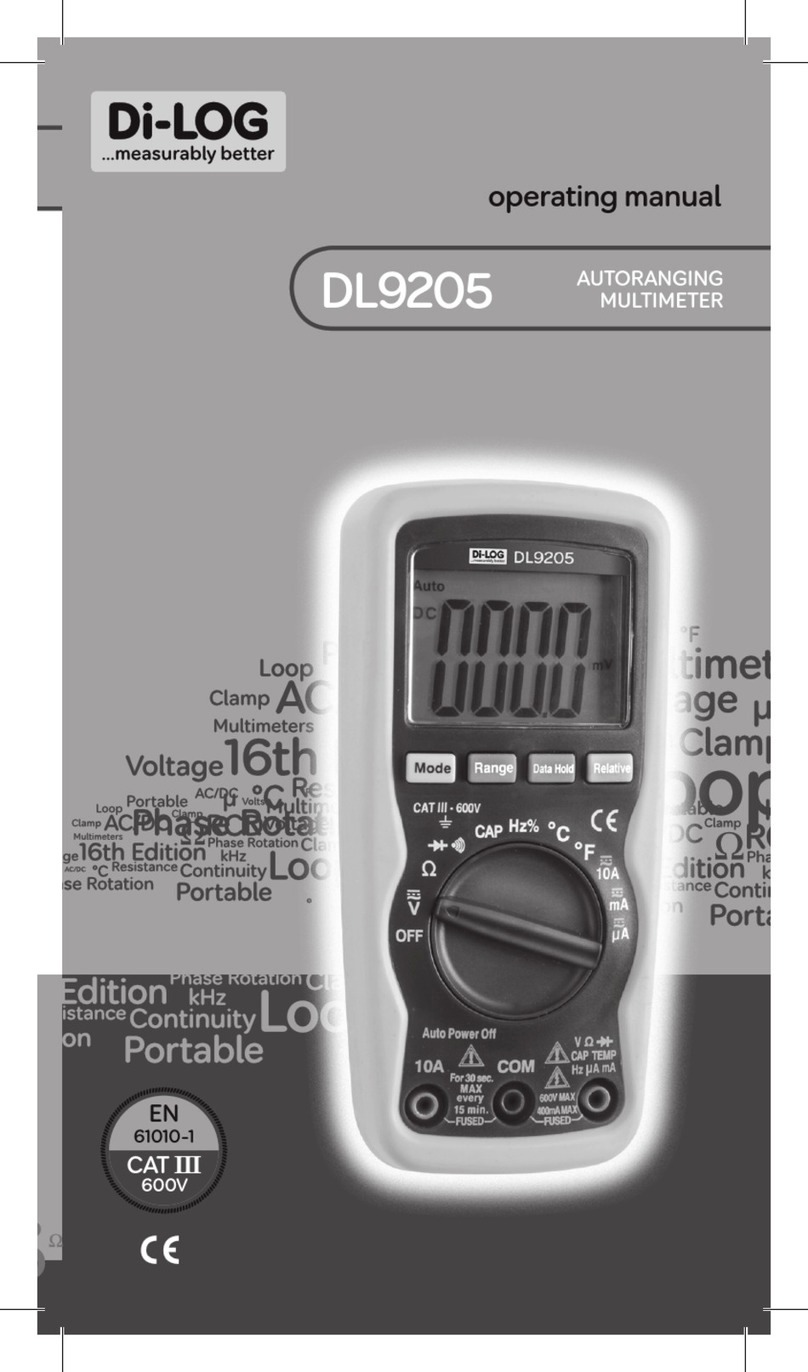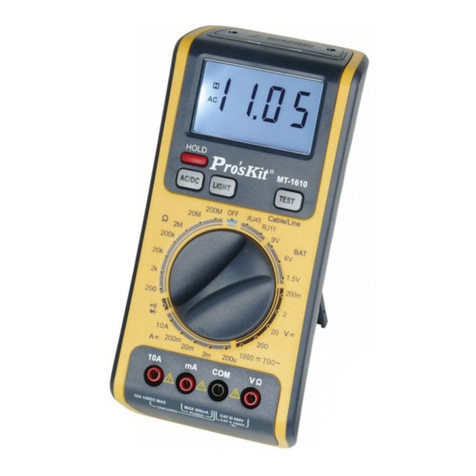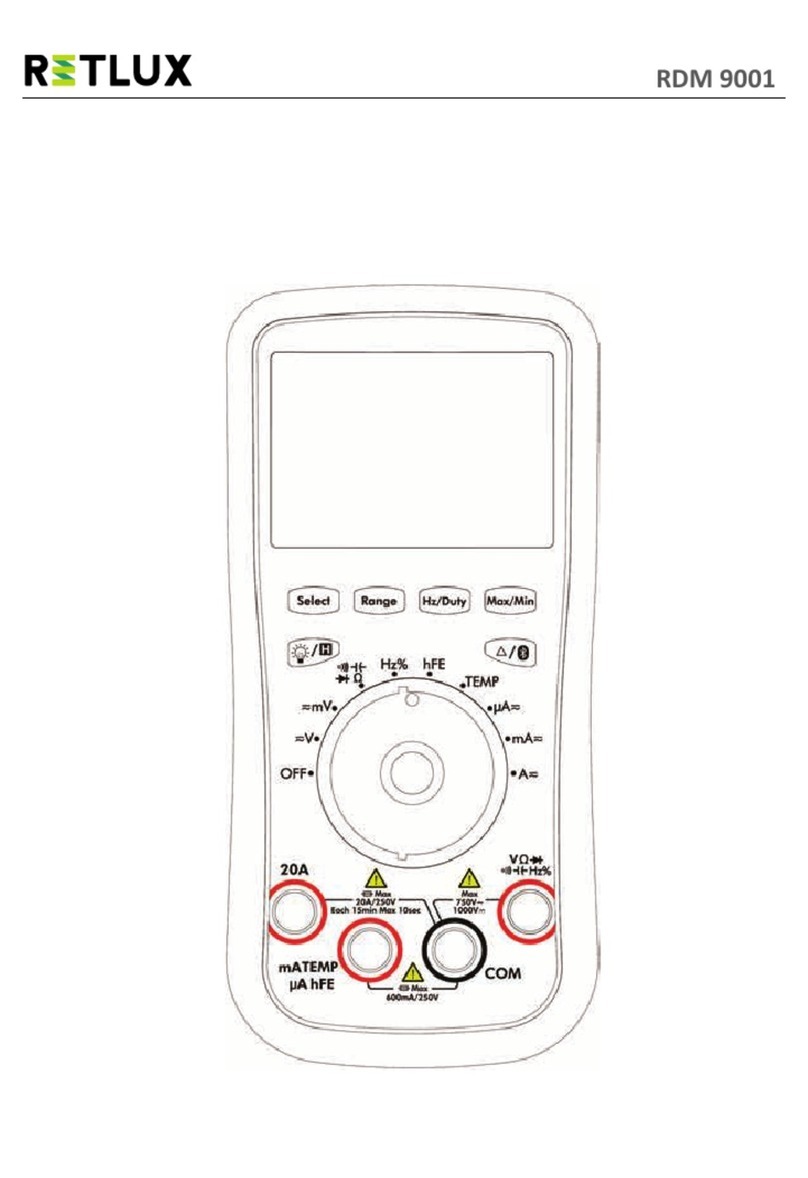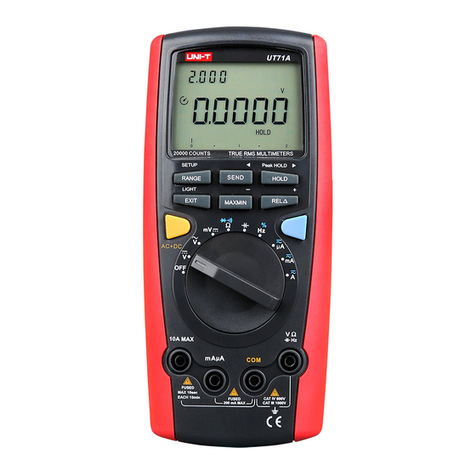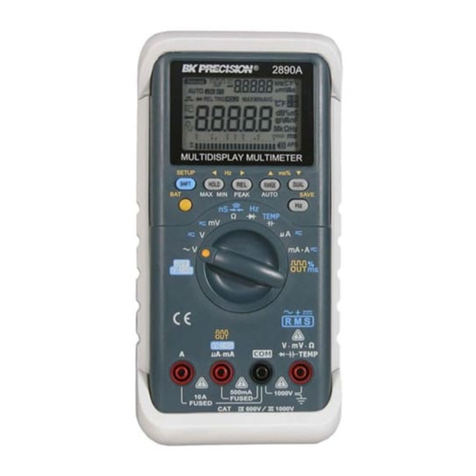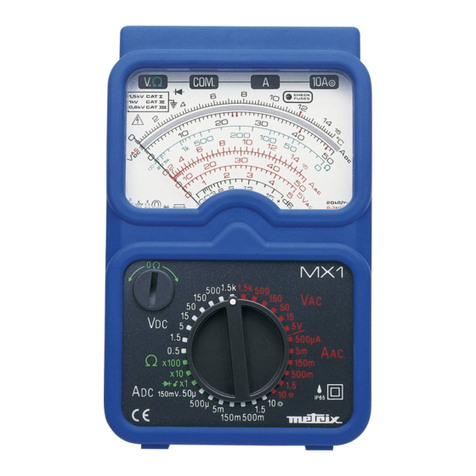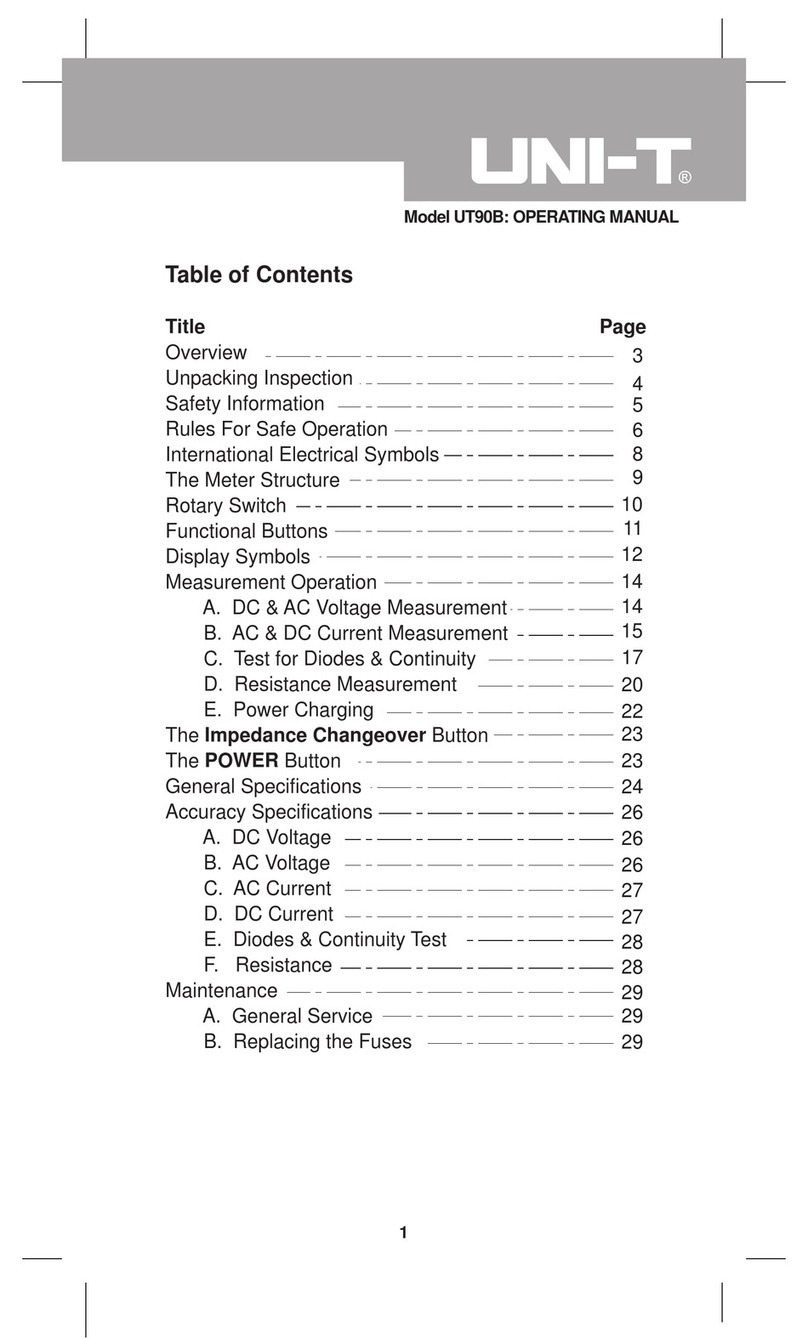
OPERATING INSTRUCTIONS MODEL
191
DMM
Z-11.
Connecting Line Power.
z-12. The Model 191 is provided with a 3-wire line
cord, shown in Figure 2-2, which mates with third-
wire grounded receptacles. Connect the instrument
to ac line power as follows:
\,
WARNING
Ground the instrument through a properly earth-
grounded receptacle before operation. Failure to
ground the instrument can result in sevet-e injury
or death in the event of short circuit or
malfunction. In addition, connect only t" the
line voltage selected. Application of incorrect
voltage can damage the instrument.
a. Plug the power c"rd into a properly grounded
outlet of a source having the selected line
voltage.
b. Operate the Model
191
as described in
Paragraph Z-13.
2-13. OPERATING INSTRUCTIONS
2-14. The basic operating instructions for the
Model 191 [IMM are outlined below, and Condensed
Operating instructions are provided on the bottom
cover of the instrument. These instructions should
only be used after becoming completely familiar with
the operation of the Model
191
through day-to-day
"SC?. Until this familiarity ha5 been achieved, best
performance and safest operation will be obtained by
using the individual instructions provided in this
section which describe how t" make specific function
mea*"reme"ts. Refer to Figure 2-3 and operate the
OMM a5 f0110w5:
/&CAUTION
no not exceed the Maximum Inputs limits given in
Table 2-2.
a. Turn on the power by depressing the ON/OFF
pushbutton. If the instrument is within 18-2R°C,
it is useable immediately, but a 1 hour warmup is
required to obtain rated accuracy. up to 1
additional hour may be required from temperature
extrelne5.
b. Select the function with the ACV, IDCV or n
pushbuttons.
c. Select the range by depressing the appropriate
pushbutton,
d. Connect the source to the INPUT terminals and
make the ,n,easurement. Accessories described in
Section 4 should he (used as required.
TAB
Summary of M
UNCTION RANGE
ZOOmV, 2
zov-1200
ALL
ALL
2-15. NULL FUNCTION.
Z-16. The NULL functi
and functions. It is
based function. The dr
function is selected.
depressed with an "n-5
that reading is subtrx
1ngs. The nulling pr"
of two numhers, and ha5
or function selected.
primarily designed to
compen*ation for te5t
emf's generated in circa
terminals,
the null f
measure variation5 db"'
example,
+1.00000 VDC
the display, and variat
made by switching to t
This,is possible hecaur
is 100,000 (counts) in
sign is active for n (a
2-17. it is important
reduce5 the dynamic re
stance, if
t1.00000
VL
voltages greater than
A,0 c"nverter (200,OOI
range would occur at *
readings less than -1
less than +lV) because
ing of
-199,999 coun
dynamic range of the
Figure 2-4. In ocv
Dynamic Range and the
exceeded and thus, bot
of the meaS"i-erne"t.
dynamic range can be e
2-2
imum Inputs.
MAXIMUM INPUT
7OOV Continuous;
12OOV for 1 minute
Rh3Xllll"lll.
IZOOV Continuous
25OV rms; 360V peak
IOOOV rnis sine or dc
2 x 107 v .Hz
is operable "n all ranger
switch selectdblr software
nciator is lighted when the
?en the NULL pushbutton is
1~ reading on tlw display,
d from all subsequent read-
55 is merely d subtraction
"thing to do with the range
For this wds"n, althouyh
,vide convenient pushbutton
lad re5istance dnd thermal
s connected to the DMO INPill
:tion cd" also be used t"
or below a 5et valur. 101.
put coutd be used to null
ns ahovc 1O.OOOWO could be
2OMn range and n function.
the numher heing subtracted
th instances, and the minus
ACV) in the NULL mode.
o note that the use of NULL
e of meas"rerne"t. For in-
is the nullpd value. input
I would still overload the
counts), even though "ver-
10.000 counts displayed, and
would cause overrange (2V
f the maximum display read-
This reduction in the
~surement is illustrated in
unction, both the Display
nput dynamic range cd" he
:dn limit the dynamic range
ACV and n, only the input
!eded.
2-3



















